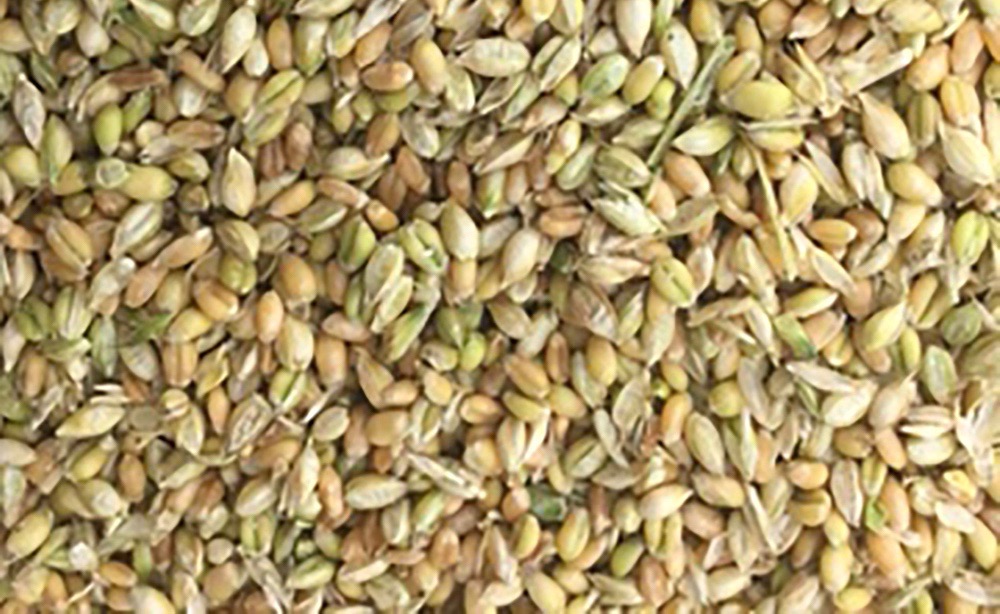Crimping solves challenge of unevenly ripened cereals
27th July 2020
Secondary tillering and the uneven ripening of cereal crops this summer is presenting challenges to growers as harvest approaches. However, these issues can be overcome by switching from dry harvest to crimping, according to feed preservation specialists, Kelvin Cave Ltd.
Secondary tillering and the uneven ripening of cereal crops this summer is presenting challenges to growers as harvest approaches. However, these issues can be overcome by switching from dry harvest to crimping, according to feed preservation specialists, Kelvin Cave Ltd.
“Crimping is the perfect solution for unevenly ripened cereals which are widespread this summer,” says David Warner, Kelvin Cave’s area manager for Somerset and West Dorset. “The problem stems from a combination of the drought in spring which prompted early maturity, particularly in spring sown crops, and the subsequent period of rain.
“The rain caused many crops to put up secondary tillers at a time when the remainder of the crop was almost mature,” he says. “This presents problems for crops being harvested for dry storage, as they will be difficult and expensive to get sufficiently dry.”
The answer many growers are turning to this year is to harvest their cereals at a higher moisture content, ideally from 25-45 per cent. These come in from the field around two to three weeks earlier than usual and are then rolled and crimped with a suitable preservative and stored in a clamp or tube in a similar way to silage.
“Crimping makes a massive difference to many producers as it widens the window for harvest, preserves the crop at a more favourable stage and brings autumn cultivations forward,” says Mr Warner. “Crimp also has the bonus of being a higher quality and safer feed for livestock than dried grain and it maximises biogas yield per hectare when used for anaerobic digestion.”
Whitchurch Farm
Arable and dairy producer, Jonathan Osborne says he has been crimping all of the wheat he grows on his 600-acre Somerset farm for at least 14 years.
He says: “We switched to crimping after having a tremendous bill for drying and handling grain and have carried on doing it ever since.
“We didn’t have any dry grain storage and I couldn’t see the logic in drying grain to sell it off the farm, only to buy in concentrates to feed the stock at a later date.”
Now choosing to crimp all of the wheat he grows at Whitchurch Farm in Ston Easton to feed to his herd of 200 Holstein Friesians and says he notices the health benefits which come with the product.
“It’s better for the cows than dried grain, maintains a more stable rumen, can be fed in higher quantities and is much less likely to cause acidosis or problems with their feet,” he says.
Also choosing to clamp in the simplest possible set-up, he says the wheat comes in from the field and is immediately run through a Korte roller with the preservative, CrimpSafe 300, by his contractors, Tim and Jack Stevens. It then goes straight into the clamp where it is compacted and sheeted, and netted to keep off the birds.
“It takes less than two days to combine our 70-80 acres of wheat and get it into the pit,” he says. “It’s simple and straightforward and we need no certification – the only thing now going up the track on this farm is milk and meat.”
Harvesting this year on 24 July, he says he will start autumn cultivations before the end of the month.
“Crimped cereals are so much more convenient and easier to grow than maize whose harvest can drag on into the winter,” he adds. “Its finances also look more favourable and we’ve calculated our growing, rolling and preservation costs total £112 per tonne.”
However, he says he has learnt through experience the importance of choosing the right preservative and has used products in the past which have not prevented the grain from heating.
“I have stuck with Kelvin Cave’s product for around 12 years and have always had perfectly preserved feed which stays cold to the touch right through the year,” he says.
He says a further benefit of crimping comes through the straw which is much less brittle than from dry-harvested wheat.
“The only difference is that we leave it for three days, probably turn it once, and it makes a fantastic product which we feed to the calves,” he says.
What is crimping?
Crimping involves the rolling of cereals, maize grain or pulses and the application of a proven preservative such as Crimpsafe 300 or Crimpsafe Hi-Dry. This ensures a controlled fermentation and maximum nutrient retention once stored in an airtight clamp (or plastic tube).
CrimpSafe preservatives allow cereals and maize grain to be crimped and ensiled at moisture contents from 16-45 per cent, although the best nutritional benefits come from grain harvested above 25 per cent moisture.
Crimp must remain sealed for at least three weeks and can then be fed to livestock or used in anaerobic digestion throughout the year.

